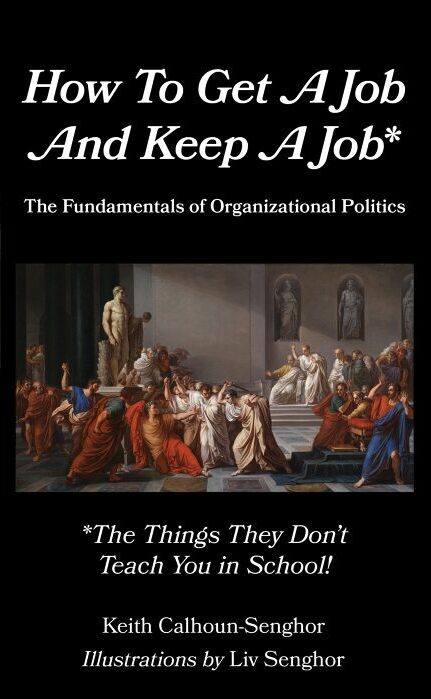
Dissecting the intricacies of professional success and sharing strategies to rise above organizational chaos, How to Get a Job and Keep a Job: The Fundamentals of Organizational Politics by Keith Calhoun-Senghor is a practical collection of savvy wisdom. With the first few chapters focusing on the skills one needs to get a job, and the second half of the book explaining how to keep it, the book can help you move forward no matter where you’re at in your career.
For those readers unfamiliar with the term, “Organizational Politics” are “the dynamics, processes, and techniques by which power is sought, obtained, and lost within a particular organization.” Examining the nuances of power within various structures – everything from law firms and tech companies to families and sports teams – this book is broadly accessible and contains lessons that are relatively easy to apply in everyday life. From learning how to pick your battles and the power of self-assessment to taking criticism gracefully and identifying the lesson in every failure, this book is an in-depth how-to guide for navigating any organization.
The 24 Calhoun-Senghor Rules make up the bulk of the text, and are packed with nuggets of advice on conversational styles, interpersonal analysis, developing a clear identity, mastering tactics of persuasion, preparing properly, confident decision-making, organizational decorum, in-office generosity, and much more. Whether it takes just a few pages or a dense chapter to explicate these key strategies, the author varies his formatting and presentation to boost the momentum and motivation to continue reading. With bullet point lists, mock-up conversations, and clearly titled subsections without excess filler or fluff, it’s also easy to review or quickly brush up on specific topics.
Frequently using personal anecdotes from his own career to exemplify critical points, Calhoun-Senghor has had a surprising amount of lived experience operating in some very serious places – even defense briefings for the White House – that inform his firm rules for organizational navigation. The chapter on succeeding in a government job is more specialized than the other sections, but it is still insightful and instructive, even for political laymen. Regardless of your personality or professional experience, understanding the ways that power and influence affect groups of people is valuable knowledge, and Calhoun-Senghor presents a personal cheat sheet that is applicable in a wide variety of settings.
The conversational tone throughout much of the book is balanced well with the writer’s obvious confidence in the subject matter, though there are occasional moments that feel redundant or intuitive, especially in the author’s 24 rules. There is a matter-of-factness to the writing that can sometimes feel abrupt, uncompromising, or a shade condescending to the reader, and the illustrations scattered between the chapters are not quite up to the level of the text, undercutting some of the authority that Calhoun-Senghor is trying to embody.
Overall, however, the book is impressive for its wide list of potential applications. Beyond advice for workplaces or organizational settings, the discussion of interpersonal dynamics, identity, confidence, and purpose is downright philosophical, at times, making the potential audience for this book even wider. Thorough, entertaining, self-reflective, and timely, the book is a one-stop primer for professionals of any age.
STAR RATING
Design
Content
Editing
Get an Editorial Review | Get Amazon Sales & Reviews | Get Edited | Publish Your Book | Enter the SPR Book Awards | Other Marketing Services






















Leave A Comment